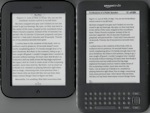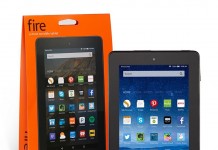
Marco.org has a comparison review of the Kindle 3 and Nook Touch. Overall, Marco Arment, creater of Instapaper, really likes the Touch. Here’s a snippet:
Overall, I’d classify this Nook as being a generational equivalent to the Kindle 3, but the Kindle 3 is nearly a year old. Launching an equivalent competitor to it today is like launching an iPad 1 competitor in February 2011.
I’d be much more impressed with this Nook had it launched last summer, and it worries me that B&N is only now using the same e-ink screen generation that Amazon had then. (What will the next Kindle use?)
But I like it. And I love the touch interface.
If the review ended here, I’d probably conclude that the Nook is a great alternative to the Kindle for nearly all potential buyers. But these e-readers aren’t self-contained — they’re primarily vending machines for two very different publishing ecosystems.
In a heavily ecosystem-dependent category like this, one good hardware release isn’t enough. …
The Kindle wins here, hands down. Amazon’s store has noticeably more books, newspapers, and magazines that people are likely to want. Many titles I’ve searched for aren’t available for the Nook but are available on the Kindle, and I haven’t yet found a case where the opposite is true.
Furthermore, Amazon’s DRM really hurts experimentation: I can’t transfer Kindle books to the Nook or vice versa, so now that I’ve purchased Kindle books, I’m strongly encouraged to stay with the Kindle device family.
While this will matter to very few Nook owners, I can’t use Instapaper or any other online service to send web content to the Nook: there’s no document-delivery mechanism like Amazon’s email gateway, and no web browser to download files directly. The only way to get non-B&N content onto the Nook, as far as I can tell, is to transfer it via USB or a micro-SD card.
If you own an iPad in addition to an e-reader and want to run the respective Nook or Kindle iPad apps, you’re much better off with the Kindle. The Nook iPad app works, but it’s mediocre, while the Kindle app is excellent.

































While Amazon still rule the ebook ecosystem war, their reader is starting to look rather dated in comparison to other offerings which offer a touch based interface. Most Kindle review sites seem to be waiting on the hyped Android tablet which Amazon will likely release this summer. However, with good quality LCD tablets readily available from Apple, Samsung & HTC, I can’t see any benefit except a slight price cut for a more limited device than what is already on the market. I hope Amazon pick up the pace on their development of their e-ink based Kindles, Kindles which appeal to heavy academic reading and long reading sessions. I’ve been holding off on purchasing a Kindle DX because of the lack of touch support. At the moment, highlighting, annotating and dictionary use are cumbersome on all of the Kindle range. Fixing these blatant shortcomings should be a priority for Amazon and make them much more appealing to university students who most likely already travel with a laptop or tablet.
The new Nook is a bit more like an improved Sony PRS-650 than anything earth-shaking. Well, that is, to people who don’t have the “ereader = Kindle” worldview. While Amazon’s store is better, I am not a fan of the Kindle. I long for the day when folk can buy the ereader that they like best and read ebooks from whatever source they wish.
Amazon have nothing to lose by opening their ebooks to other hardware manufacturers. They lose money on the sale of Kindles. The problem is with the publishers and the copyright guarantee which they insist on enforcing. The publishers won’t allow open books.
Mr Saville, could you please cite a source for the assertion that Amazon *loses* money on the sale of Kindles?
Because every reputable source that has ventured a guess (iSupply, etc) has made it clear Amazon makes an actual profit on Kindles. Their margins may be, ahem, paper thin, but they are real. If anything, the oddball pricing of the KSO makes it abundantly clear they operate in the black, otherwise why not “lose” a few more bucks to get to the magical $99 price point? All the tea leaves seem to say Kindles cost at most $80 to build. Even factoring shipping, support, and retailer margins, there is plenty of room for profit between $80 and $114, to say nothing of $139 and $189.
Also, how come Amazon is selling “lesser” Kindles at a “loss” while Kobo and B&N sell at the same or even lower prices? They’re the high volume/low margin player, not the “plucky underdog”. And Kobo isn’t big enough to sustain major hardware losses at the same time they expand globally. They’re an operation that issues a Press Release when they get $50 million in funding! That’s not going to last long if they’re selling a million readers at a loss.
More, Kindles are reportedly selling at the rate of 60,000 units a *day*, while most of the me-too regional competitors aren’t moving that much in a year, and that includes many of the euro brands. If Amazon is truly engaging in dumping on that scale, why aren’t the brusselcrats rushing to protect their national champions against evil Amazon?
Amazon keeps quiet about their internal financials but enough filters out through suppliers that it is clear they are currently moving Kindles by the tens of millions; That’s big money. If they’re losing money, they’re losing it by the truckload and losses of hundreds of millions don’t stay quiet very long. Neither do comparable profits. And what we’re hearing lately sounds like profits.
Kindle is a $3 billion a year business, not a loss leader.
Even B&N, self-constained to the US market, has easily grown Nook into a billion-dollar business.
ebooks and readers are a real profit-making business in their own right, *now*, not a gamble on future revenue and it is a big business for big players. High volume/high efficiency are the key to profits; just because lesser players can’t get there doesn’t mean the big boys can’t.
I’m not spoiled so my parents don’t buy me things, so I saved my money for a kindle and about a month after I got it, it froze up. I had been so careful with it seeing as I bought it with my own savings. We contacted amazon and they couldn’t do anything but send me a new one. Great. Fluke. Or maybe not!! I had my new one for two weeks and the exact same thing happened!!!! Do I get my money back and get a nook? I’ve done some research and the nook seems like the better way to go. The kindle has eink so that’s a plus. The nook is has a backlight and touch screen. (I know you can get a new kindle with a touch screen!) The kindle has a significantly wider selection of book! I’m stressed!
Felix:
You’re most likely correct. I based the ‘loss’ on rumours that spun through the tech sites back in 2010 based on the high costs of e-ink displays at the time. However, with Amazon’s buying power, who knows. The same rumours popped up for the new versions of the Kindle as well.
I’m not sure they are the clear leader in eBooks in all countries however. Kobo are sold in retail stores all throughout Canada, whereas the Kindle has to be ordered from the US over the web, and it subject to import taxes. I see far more Kobos than Kindles in Calgary. But I have not seen either companies sales claims.
Romeo:
Are you sure your computer is outputting enough voltage through your USB port in order to charge the Kindle correctly? In any case, your warranty should still be valid, even though they have replaced it once before. So, contact Amazon and have it sent in.